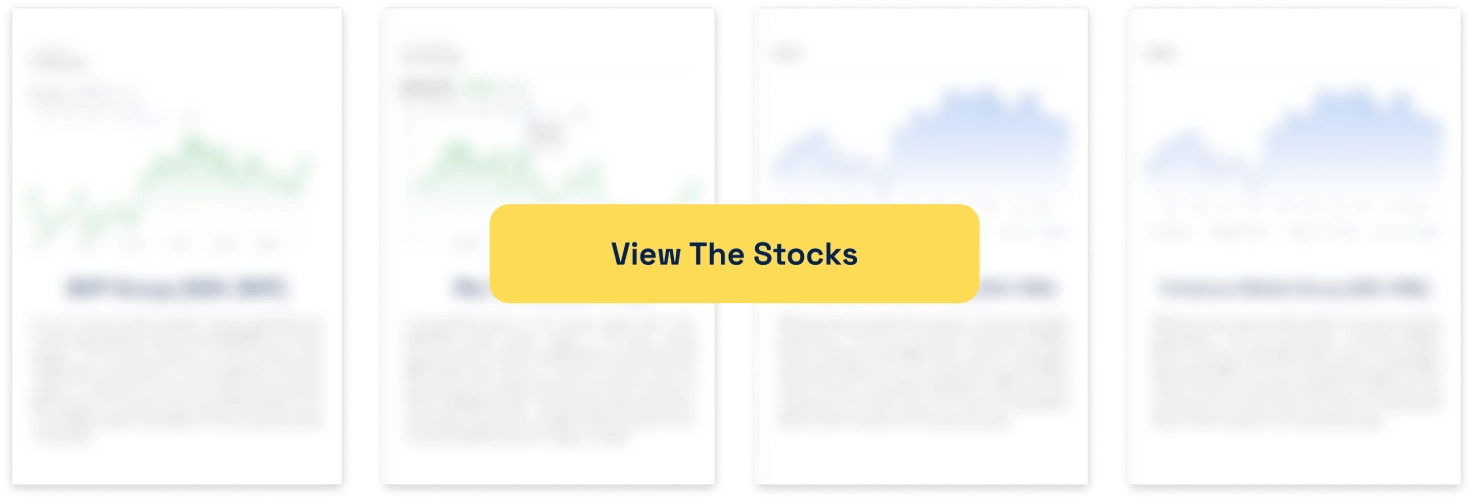Why September Is Wall Street’s Worst Month — And What It Means for the ASX

Markets often move in patterns, and one of the most enduring is the so-called September Effect. Of all the quirks on the calendar, this one stands out: September has historically been the weakest month for Wall Street. We’re not talking about folklore or trader superstition; nearly a century of data supports the trend. Investors approach September with a sense of caution because the odds of weakness are higher than in any other month.
The pattern often feels inevitable. August tends to be a softer month for equities, with low trading volumes and holiday breaks slowing momentum. By the time September arrives, big investors are back at their desks, portfolios are reshuffled, and the enthusiasm of retail traders usually fades. The outcome is often a market pullback that dents confidence. This year looks no different; if anything, the risks are greater. Volatility in the Nasdaq is rising, the Federal Reserve’s next move is still unclear, and global challenges from China’s slowdown to swings in commodity prices are adding pressure. September will once again test investors, and the ASX is unlikely to escape the impact.
What are the Best ASX stocks to invest in right now?
Check our buy/sell tips
Historical Data: The Proof of the Pattern
The September Effect is not superstition; it is rooted in long-running statistics. Since the late 1920s, September has stood out as the only month in which the S&P 500 averages a negative return. According to long-term studies, the index has lost about 0.7% to 0.8% on average each September, a stark contrast to gains usually seen in other months. The Nasdaq has shown similar tendencies, underperforming in September far more often than in July or November.
To put this into perspective, data from Fisher Investments notes that since 1925, September is the sole calendar month that has delivered negative average returns across the S&P 500. LPL Research, using records back to 1950, reinforces this by showing the index loses an average of 0.7% in September, with especially poor outcomes in the past five years, where the average drawdown has been around 4%. Even though the numbers fluctuate from decade to decade, the broad conclusion holds: September is a tough month for equities.
This doesn’t mean every September is red ink. Roughly half of September’s have actually been positive, with the median return hovering around 0%. Yet the frequency and magnitude of down months outweigh the upswings, and investors have come to respect the trend. The historical record shows that when September goes bad, it tends to go very bad, as seen during the Great Depression in 1931 or the global financial crisis in 2008, when September declines became synonymous with market trauma.
Why September Tends to Falter
The reasons behind the September Effect are not fully agreed upon, but several recurring explanations carry weight. One factor is the post-summer rebalancing of portfolios. Many institutional managers and funds return from holidays in September and look to lock in gains from earlier in the year or shed underperforming names before the final quarter begins. That rush of repositioning often translates into selling pressure.
Another influence comes from fiscal year-end dynamics. In the U.S., many mutual funds and large investment vehicles close their books in September. To tidy portfolios, managers often sell laggards or realise tax benefits, which can push markets lower. A parallel effect occurs in the bond market. September is typically a heavy month for debt issuance, drawing investor funds into fixed income and away from equities, adding another source of drag.
Then there is the psychological factor. Markets are as much about sentiment as they are about cash flow. The September Effect has become a widely recognised phenomenon, and in some years it becomes self-fulfilling. When investors anticipate weakness, they may pre-emptively sell holdings, setting off the very downturn they fear. Compounding this, September’s history is peppered with genuine crises; the 1929 crash began in late summer, the 2001 terrorist attacks happened in September, and the collapse of Lehman Brothers in September 2008 ignited the global crisis. Such events reinforce the month’s dark reputation, making investors nervous even in years when fundamentals look sound.
Why This Year May Be Even Worse (or Perhaps Not)
Looking at the present, we believe there are credible reasons why September 2025 could bring elevated risk. First, the Nasdaq’s leadership remains fragile. The first half of the year saw technology giants propel markets higher, but valuations now look stretched, and profit-taking pressure is rising. AI optimism has cooled, and when dominant names stumble, the rest of the index often follows.
Second, Federal Reserve policy remains a major uncertainty. Inflation has retreated from its highs, but policymakers continue to strike a cautious tone. Investors are unsure whether the Fed will hold rates steady or pivot later in the year. This ambiguity is fertile ground for volatility, particularly in September when liquidity tightens and earnings momentum slows.
Third, geopolitical and global macro headwinds are adding stress. China’s economy is faltering under the weight of property market troubles and weak consumer demand, raising questions about global growth. Trade tensions and tariff disputes, especially in the lead-up to the U.S. presidential election, could further rattle sentiment.
Yet it’s worth noting that September weakness is not always extreme. Some factors could soften the blow this year. Systematic traders and institutions front-loaded buying activity in July and August, meaning some repositioning may already have taken place. That could reduce the scale of September sales. In addition, the long-term structural strength of the technology sector, underpinned by AI and digital transformation, could provide resilience. Ultimately, we see September as risky, but not necessarily catastrophic. The seasonal trend is a headwind, not a prophecy.
Implications for the ASX: Should Australian Investors Be Worried?
Whenever Wall Street sneezes, the ASX tends to catch a cold. The Australian market, while influenced by domestic factors, remains highly correlated with U.S. sentiment. This is especially true during bouts of risk aversion, when global funds trim exposure broadly rather than discriminating by geography. For Australian investors, the September Effect is worth heeding.
The most vulnerable sectors on the ASX are those that rely heavily on global growth or risk appetite. Technology stocks, such as Xero or WiseTech Global, could suffer as investors pare back exposure to high-valuation sectors. Discretionary retailers may also be hit if global consumer confidence wanes. Miners, the cornerstone of the ASX, face particular risk if global growth fears pressure commodity prices. A slowdown in China, Australia’s largest trading partner, adds another layer of vulnerability.
But it’s not all gloom. Historically, gold stocks on the ASX have benefited when global markets wobble. Companies such as Northern Star Resources (NST), Evolution Mining (EVN), and Newmont Corporation (NCM) often rise as investors seek safety in precious metals. Healthcare giants like CSL and Ramsay Health Care also provide defensive ballast, as their earnings are less sensitive to the economic cycle. Consumer staples, including supermarkets and essentials, often hold steady when discretionary sectors falter.
For investors, this suggests a dual strategy: acknowledge the risks in cyclical sectors but look for opportunities in defensives. In our view, the ASX is likely to mirror Wall Street’s tone in September, though the extent of weakness will depend on whether global fears materialise or prove overdone.
Stocks & Sectors to Watch
U.S. Markets
In the U.S., the most at-risk stocks remain the big technology names that carried indices higher in the first half of the year. Apple, Microsoft, and Nvidia, for instance, trade at rich valuations, leaving them vulnerable to profit-taking. Discretionary sectors such as retail, travel, and leisure also face potential headwinds if consumer spending slows in response to tighter financial conditions.
On the other hand, traditional safe havens may shine. Utilities, with their steady cash flows, often attract buyers in volatile times. Gold-related ETFs and healthcare stocks may also provide resilience. For U.S. investors, September could be a time to reduce cyclical exposure and tilt toward defensives.
ASX Opportunities and Risks
In Australia, we see a similar split. Gold miners look poised to benefit if volatility intensifies, particularly with the Australian dollar often weakening in risk-off environments, boosting local gold revenues. Northern Star Resources, Evolution Mining, and Newmont Corporation stand out as leading names.
Healthcare leaders, notably CSL and Ramsay, provide defensive exposure, given their global reach and steady demand. Consumer staples such as Woolworths and Coles are likely to hold ground as households prioritise essentials over discretionary purchases.
Meanwhile, cyclical retailers like JB Hi-Fi and Wesfarmers may be more exposed to downturns in consumer sentiment. Technology names, though promising in the long run, could be pressured in the short run if Wall Street’s Nasdaq slump spreads globally. Investors may want to keep these on the watch list for buying opportunities rather than panic selling.
Conclusion
The September Effect remains one of the most enduring seasonal patterns in financial markets. While not a guarantee of losses, history shows that the odds of weakness in September are higher than in any other month. This stems from a mix of institutional rebalancing, fiscal year-end effects, bond market flows, and entrenched investor psychology.
For 2025, the risks are heightened by uncertainty around U.S. monetary policy, a fragile global economy, and ongoing volatility in technology stocks. It suggests that Australian investors should brace for turbulence on the ASX, with miners, discretionary retailers, and technology names most exposed. Yet safe havens exist. ASX gold stocks, healthcare leaders, and staples provide resilience, and volatility itself can create buying opportunities for those willing to take a contrarian stance.
Seasonality is not destiny. September may test investors, but it can also reward those prepared to look beyond the noise. History warns us to be cautious, but experience reminds us that disciplined, diversified investors often emerge stronger from temporary downturns.
FAQs
- Why is September historically the worst month for Wall Street?
September has long shown weaker performance because of seasonal portfolio rebalancing, mutual fund year-end selling, and investor psychology. Average returns for the S&P 500 in September are negative, unlike most other months.
- Does the September Effect always cause markets to fall?
Not always. Around half of September actually ends in positive territory. However, the odds of a decline are higher compared to other months, and when downturns occur in September, they tend to be sharper.
- How does Wall Street weakness affect the ASX?
The ASX is highly correlated with U.S. sentiment. When Wall Street falls, overseas investors often reduce Australian exposure as well. Miners, discretionary retailers and tech names are typically the most vulnerable.
- Which ASX sectors perform better during September downturns?
Gold miners like Northern Star and Evolution often benefit as investors seek safety. Healthcare leaders such as CSL and Ramsay Health Care, along with consumer staples like Woolworths, usually hold up better than cyclical sectors.
- Should investors sell before September to avoid losses?
We believe selling purely because of the calendar is risky. While September has a weak historical record, it also provides opportunities to buy quality stocks at discounted prices. Staying diversified is a better strategy.
Blog Categories
Get Our Top 5 ASX Stocks for FY26
Recent Posts
Can AI predict future stock returns?
Artificial intelligence can outperform human analysts. Used together, humans and AI are particularly difficult to beat. Machine learning is a…
ASX Casino Stock Investment Analysis Guide
Investing in ASX-listed casino stocks demands a unique blend of market analysis and sector-specific insight. It is a high-stakes game…



